History
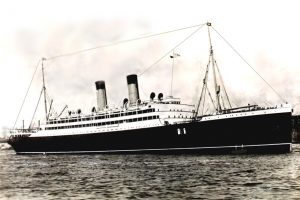 Two years after the sinking of the Titanic, the world was still very aware of the dangers of travel by ship. The Titanic was supposed to be unsinkable, and yet on April 14, 1912, it took more than 1500 people to the bottom of the Atlantic Ocean with it. Many safety precautions had changed since Titanic went down. The ship’s radio room had to be manned at all times, crews were trained extensively in emergency procedures, and ships were equipped more than enough lifejackets and lifeboats. Every precaution that they knew to take had been taken, making The Empress of Ireland one of the safest ships on Earth.
Two years after the sinking of the Titanic, the world was still very aware of the dangers of travel by ship. The Titanic was supposed to be unsinkable, and yet on April 14, 1912, it took more than 1500 people to the bottom of the Atlantic Ocean with it. Many safety precautions had changed since Titanic went down. The ship’s radio room had to be manned at all times, crews were trained extensively in emergency procedures, and ships were equipped more than enough lifejackets and lifeboats. Every precaution that they knew to take had been taken, making The Empress of Ireland one of the safest ships on Earth.
On May 29, 1914, The Empress of Ireland left Quebec Harbor on a  transatlantic journey to Liverpool England. She was sailing in heavy fog down Canada’s Saint Lawrence River, carrying 1477 passengers and crew. The Norwegian freighter Storstad was also sailing on the Saint Lawrence River on that fateful day. Sailing in heavy fog, without the modern GPS equipment to keep everyone informed of the ships’ positions, is a seriously dangerous undertaking. I don’t know that the normal protocol was for sailing in fog, but it would make sense to me that they should drop anchor and wait for the fog to lift before continuing on. I’m sure that these days, the ships would have some kind of protocol.
transatlantic journey to Liverpool England. She was sailing in heavy fog down Canada’s Saint Lawrence River, carrying 1477 passengers and crew. The Norwegian freighter Storstad was also sailing on the Saint Lawrence River on that fateful day. Sailing in heavy fog, without the modern GPS equipment to keep everyone informed of the ships’ positions, is a seriously dangerous undertaking. I don’t know that the normal protocol was for sailing in fog, but it would make sense to me that they should drop anchor and wait for the fog to lift before continuing on. I’m sure that these days, the ships would have some kind of protocol.
The Empress and the Storstad spotted each other several minutes before the inevitable collision, but altered 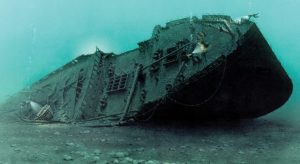 courses and confused signals brought them into the fateful moment of impact. I suppose that if each ship hadn’t moved in the same direction, they might have been able to avoid the collision, but unfortunately they did move in the same direction. The Storstad penetrated 15 feet into the Empress of Ireland‘s starboard side, and the vessel sunk within 14 minutes, drowning 1,012 of its passengers and crew in the Gulf of Saint Lawrence. It was one of the worst ship disasters in history. Only seven lifeboats escaped the rapidly sinking vessel, but thanks to the efforts of the crew of the Storstad, scores of survivors were pulled out of the icy waters.
courses and confused signals brought them into the fateful moment of impact. I suppose that if each ship hadn’t moved in the same direction, they might have been able to avoid the collision, but unfortunately they did move in the same direction. The Storstad penetrated 15 feet into the Empress of Ireland‘s starboard side, and the vessel sunk within 14 minutes, drowning 1,012 of its passengers and crew in the Gulf of Saint Lawrence. It was one of the worst ship disasters in history. Only seven lifeboats escaped the rapidly sinking vessel, but thanks to the efforts of the crew of the Storstad, scores of survivors were pulled out of the icy waters.
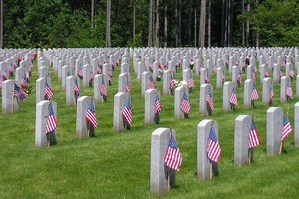
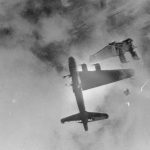 Many people think of Memorial Day as the unofficial start of summer. They plan barbecues and trips with family because they have a three day weekend. Memorial Day, however, is really a day to remember the soldiers who gave their lives fighting for our freedoms in battle. While the work of every service member, whether in battle or in peacetime, is vital, and deserves recognition, Memorial Day is not the proper day to honor every veteran…Veterans Day is the day to honor veterans who came home from war, or who served in peacetime. Many people may consider that a technicality, but when you remember that the military is an institution of protocol and discipline. Things are always done in the proper order and for the proper reasons. That is what makes the military the disciplined, capable, and highly skilled organization that it is. Of course, to those of us who have never served, there is a feeling of wanting to honor all of our service members, and we don’t see the harm in adding those who weren’t killed in action, to the same memorial as those who didn’t make it home, but we would be wrong.
Many people think of Memorial Day as the unofficial start of summer. They plan barbecues and trips with family because they have a three day weekend. Memorial Day, however, is really a day to remember the soldiers who gave their lives fighting for our freedoms in battle. While the work of every service member, whether in battle or in peacetime, is vital, and deserves recognition, Memorial Day is not the proper day to honor every veteran…Veterans Day is the day to honor veterans who came home from war, or who served in peacetime. Many people may consider that a technicality, but when you remember that the military is an institution of protocol and discipline. Things are always done in the proper order and for the proper reasons. That is what makes the military the disciplined, capable, and highly skilled organization that it is. Of course, to those of us who have never served, there is a feeling of wanting to honor all of our service members, and we don’t see the harm in adding those who weren’t killed in action, to the same memorial as those who didn’t make it home, but we would be wrong.
I have been listening to a book about the 8th Air Force in World War II. As the narrator tells the story of a bomber or fighter plane that will not be returning to base, and a crew who had a one way ticket to the war, I find myself thinking about how my dad, Allen Spencer must have felt each time the B-17 bomber, on which he was a top turret gunner, took off on another bomb run. The feeling in his gut as the plane took off, the prayers he was praying for himself and every other crew member on his and every other plane, the sickening feeling as the planes went down or exploded, and the long moments waiting and watching to see how many parachutes emerged from the stricken planes. I know that my dad and every other soldier who returned from the war, lost buddies over there. I don’t think you could ever forget those lost ones, and I don’t think you could see your way clear to honoring the living with the lost.
I know a number of soldiers, both retired and discharged, as well as some who are currently serving in the armed forces. These people know the meaning of each of the military holidays, and in fact, it was one of them 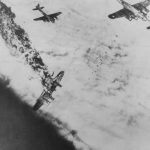
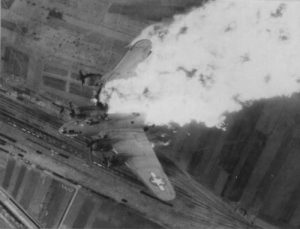 who first told me the difference between the military holidays. Once you know the difference, you really don’t feel right about celebrating the wrong way, because each holiday has its proper purpose. This memorial Day, I honor all of our fallen soldiers of any war, and I pray for the loved ones they left behind when it was known that they got just a one way ticket to war. Your loved one was a great warrior, and you have every reason to be very proud. Honoring our fallen soldiers on this Memorial Day. Rest In Peace.
who first told me the difference between the military holidays. Once you know the difference, you really don’t feel right about celebrating the wrong way, because each holiday has its proper purpose. This memorial Day, I honor all of our fallen soldiers of any war, and I pray for the loved ones they left behind when it was known that they got just a one way ticket to war. Your loved one was a great warrior, and you have every reason to be very proud. Honoring our fallen soldiers on this Memorial Day. Rest In Peace.
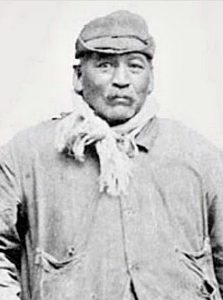 I suppose that most of the time, when someone sets out to invent something, they have a specific plan in mind, but maybe not. A number of inventors were trying to invent something completely different from what they ended up inventing, or they weren’t trying to “invent” anything at all, but ended up making something very cool.
I suppose that most of the time, when someone sets out to invent something, they have a specific plan in mind, but maybe not. A number of inventors were trying to invent something completely different from what they ended up inventing, or they weren’t trying to “invent” anything at all, but ended up making something very cool.
One day in 1853, a chef at the Carey Moon Lake House in Saratoga Springs, New York, named George Crum was at work, and making a meal for a customer. Apparently this customer was rather picky, which I can understand when it comes to certain things. The customer had ordered a plate of fried potatoes, and since my mom, Collene Spencer often made fried potatoes when I was a kid, I can attest to how great they tasted. Fried potatoes, however, must be correctly cooked to be really good, and I suppose that there are many differing views as to which way of cooking them is correct. Sometimes, its just a matter of personal preference.
Chef Crum fried the potatoes in the way he had always done so, but found that he was apparently unable to please this particular customer. Anyone who has ever worked in a restaurant knows that it is really frowned upon to have food sent back to the kitchen. The chef is given a goal of almost reading the mind of the customer…and expected to get it right. I know that this can be difficult from my own experience. I love what I would call extra crispy bacon, but when I tell them extra crispy, I usually end up with bacon that is floppy and, in my opinion, disgusting. I have long since learned that if I want to get truly crispy bacon, I must tell them that I want it burned. Only then will the bacon come out “crispy” enough for me, which, by the way, never has any black parts that would indicate that it was burned.
On this particular day, Chef Crum was having a bad day, at least from the perspective of pleasing the  customer, who sent the potatoes back many times, asking that the potatoes be thinner and crispier. Finally in a fit of temper, Chef Crum sliced the potatoes insanely thin and fried them until they were “as hard as a rock,” before sending them back out to the customer. To his astonishment, the customer absolutely loved the potatoes, and wanted more. Now, for anyone who likes potato chips, the request for seconds comes as no surprise, because it really is hard to eat just one potato chip, as the saying goes. Since that day, I’m sure that these new fangled potatoes were a menu favorite at the Carey Moon Lake House. They must have been, because as we all know, they are still available to this day, and they show no sign of losing their popularity now either.
customer, who sent the potatoes back many times, asking that the potatoes be thinner and crispier. Finally in a fit of temper, Chef Crum sliced the potatoes insanely thin and fried them until they were “as hard as a rock,” before sending them back out to the customer. To his astonishment, the customer absolutely loved the potatoes, and wanted more. Now, for anyone who likes potato chips, the request for seconds comes as no surprise, because it really is hard to eat just one potato chip, as the saying goes. Since that day, I’m sure that these new fangled potatoes were a menu favorite at the Carey Moon Lake House. They must have been, because as we all know, they are still available to this day, and they show no sign of losing their popularity now either.
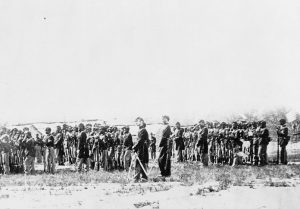
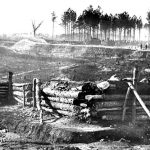 Prior to the Civil War, and even for years afterward, the black man was considered first a non-human, and secondly not very intelligent. Because of that, it was thought that the black soldiers would not be able to handle real combat situations. Nevertheless, the Union Army needed their help, and so they would have to take a chance on the black soldiers along the James River in the spring of 1864. My guess is that it was a rather tense moment when the Federal Soldiers faced off the Rebels on May 24, 1864. They stood behind the walls they had built with their own hands, and watched as the dismounted Rebel cavalry charged toward them. With their rifles trained on the enemy troops, each man knew that this was their chance to prove themselves. They were a brigade of mostly black soldiers, and it was vital that they be able to hold their own against an enemy who outnumbered them two to one. As well as an enemy who was party to their years of slavery.
Prior to the Civil War, and even for years afterward, the black man was considered first a non-human, and secondly not very intelligent. Because of that, it was thought that the black soldiers would not be able to handle real combat situations. Nevertheless, the Union Army needed their help, and so they would have to take a chance on the black soldiers along the James River in the spring of 1864. My guess is that it was a rather tense moment when the Federal Soldiers faced off the Rebels on May 24, 1864. They stood behind the walls they had built with their own hands, and watched as the dismounted Rebel cavalry charged toward them. With their rifles trained on the enemy troops, each man knew that this was their chance to prove themselves. They were a brigade of mostly black soldiers, and it was vital that they be able to hold their own against an enemy who outnumbered them two to one. As well as an enemy who was party to their years of slavery.
The battle the black troops were about to fight was a small part of Lieutenant General Ulysses S Grant’s Overland Campaign. The goal was to cripple the Confederate capital, and in doing so, bring down the Confederacy before the end of 1864. The Army of the James consisted of the X and XVIII Corps. About 40% of the army’s 33,000 men were black. Butler was confident his “colored troops” would do all the Union hoped and more, because he realized they viewed their service as a chance to gain rights they had never had before for themselves and for their families…making blacks free and equal to whites. Of course, fear of capture and a return to slavery, was a great motivator to win this battle and the war too. In early May, Butler and his army left Fort Monroe at the mouth of the James River and drove upriver toward Bermuda Hundred, about 14 miles south of Richmond. The general believed this was a better position to attack the capital from this strip of land, which lies at the point where the Appomattox River meets the James. From there, Butler’s forces could disable rail transportation south of Richmond and with it, communication between the capital and points south.
Late on the afternoon of May 5, a week before the army’s planned arrival on Bermuda Hundred, Butler reported to Grant that Brigadier General Edward A. Wild’s brigade of black troops had captured these two sites without opposition. Their arrival, Butler wrote, was “apparently a complete surprise” to the Confederates. The sight of former slaves coming ashore at Wilson’s Wharf must have almost terrified local planters, because many of the troops had once been held in bondage in the surrounding area. It could feel very intimidating to think of the former slaves motive for revenge. Shortly after the brigade’s arrival, the soldiers captured William Clopton, a wealthy planter known for his brutality. Wild, with his profound hatred of slavery, ordered his men to tie Clopton to a tree and expose his back. Then Wild ordered William Harris of Company E forward to flog his former master, Cheers echoed through the African Brigade. “Mr. Harris played his part conspicuously,” Sergeant Hatton recalled, “bringing the blood from his loins at every stroke, and not forgetting to remind the gentleman of the days gone by.” Wild described the lashing of Clopton to Hinks as “the administration of 
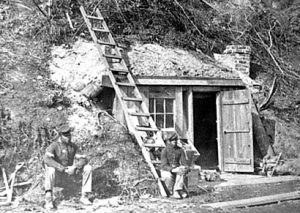 Poetical justice.” The fears of the plantation owners were realized that day, but whipping the planters was the least of Wild’s concerns at Wilson’s Wharf. He immediately put his troops to work on an earthwork fortification on a bluff over the James and named it Fort Pocahontas. The walls held against Confederates, and the Union would go on to win the Civil War, but no one would again be able to say that the black soldiers couldn’t do their job, nor would they ever doubt the depth of their rage over the cruel treatment they had been subjected to by the slave owners.
Poetical justice.” The fears of the plantation owners were realized that day, but whipping the planters was the least of Wild’s concerns at Wilson’s Wharf. He immediately put his troops to work on an earthwork fortification on a bluff over the James and named it Fort Pocahontas. The walls held against Confederates, and the Union would go on to win the Civil War, but no one would again be able to say that the black soldiers couldn’t do their job, nor would they ever doubt the depth of their rage over the cruel treatment they had been subjected to by the slave owners.

 On this day, May 23, 1911, President William Howard Taft presided over a ceremony to dedicate the New York Public Library, which is the largest marble structure ever constructed in the United States. The building occupies a two-block section of Fifth Avenue between 40th and 42nd Streets. The monumental Beaux-Arts structure took 14 years to complete at a cost of $9 million. The term beaux arts (pronounced BOZE-ar) means fine arts or beautiful arts. “The Beaux-Arts “style” emanated from France, based on ideas taught at the legendary L’École des Beaux Arts (The School of Fine Arts), one of the oldest and most esteemed schools of architecture and design in Paris.” The 20th century marked a period of great growth throughout the world, and new access to learning materials was needed. The first free continuous children’s library in the United States was funded privately, and was founded in 1835 in Arlington, Massachusetts. Nevertheless, libraries were in pretty short supply when the New York Public Library opened in 1911. One day after its dedication, the library opened to the public. It is thought that about 40,000 citizens passed through to make use of a collection that already consisted of more than a million books. It was a great day in the world of education.
On this day, May 23, 1911, President William Howard Taft presided over a ceremony to dedicate the New York Public Library, which is the largest marble structure ever constructed in the United States. The building occupies a two-block section of Fifth Avenue between 40th and 42nd Streets. The monumental Beaux-Arts structure took 14 years to complete at a cost of $9 million. The term beaux arts (pronounced BOZE-ar) means fine arts or beautiful arts. “The Beaux-Arts “style” emanated from France, based on ideas taught at the legendary L’École des Beaux Arts (The School of Fine Arts), one of the oldest and most esteemed schools of architecture and design in Paris.” The 20th century marked a period of great growth throughout the world, and new access to learning materials was needed. The first free continuous children’s library in the United States was funded privately, and was founded in 1835 in Arlington, Massachusetts. Nevertheless, libraries were in pretty short supply when the New York Public Library opened in 1911. One day after its dedication, the library opened to the public. It is thought that about 40,000 citizens passed through to make use of a collection that already consisted of more than a million books. It was a great day in the world of education.
Since that time, many advances have happen in the world of books. It is a matter of debate in many circles as to whether these changes are good or bad. I settle on the side of good, because I think that if technology is available, we should take advantage of it. Many of my writer friends tell me that they love the smell of the ink on the printed page, or the feel of the book in their hands, but I guess I tend to be more on the practical side of the argument. I like my kindle, and the fact that I can carry hundreds of books around in my purse, to be available no matter where I am, and without the necessity of packing around several books. When the Kindle came out, I saw it as “the greatest thing since sliced bread.” I can own hundreds of books and I don’t have to have room to store them all. Nevertheless, as a writer, I have found that I have very little time to be a reader, and that posed a problem. I had all these books I wanted to read, but I was always trying to finish the story I was currently working on, so time was scarce.
Enter Audible.com. I had heard of Audible long before I gave it a try, but on a “girls trip” with my sister, Cheryl Masterson and my niece, Liz Masterson, I was introduced to Audible by Liz, who is a member. Liz, like me has very little time to dedicate to reading a book, but while she is editing photographs for her job as a journalism teacher, she can listen to a book. “Well,” I thought, “So can I.” So I joined and I have really enjoyed taking my daily walk, while listening to a book, or writing while listening to a book. I am a World War II history buff, and I love listening to the history of that war the most, but I have also listened to many other types of books.
Knowledge comes to us in many different forms, and while the library has been responsible for bringing a world of books to the people, without the need to spend the money on purchasing the book, it also must change with the times. People lead very busy lives, and being able to check out an audible or a digital book is a great way to continue bringing books to the world. Unfortunately, many libraries have been reluctant to accommodate this new style of reading. That is sad for them, because like it or not, the digital age is hers, and if the libraries want to move forward into the next century, they are going to have to join the modern times. I hate to see 
 buildings no longer be used as libraries, but there will always be the purist who loves the smell of ink and the feel of the pages, and there will always be schools who bring classes to the library to introduce them to the world of books, but you can’t discount the busy adult who wants to read, but doesn’t have the time. Digital books are the wave of the future that allows even the busiest adult the ability to access books and learning.
buildings no longer be used as libraries, but there will always be the purist who loves the smell of ink and the feel of the pages, and there will always be schools who bring classes to the library to introduce them to the world of books, but you can’t discount the busy adult who wants to read, but doesn’t have the time. Digital books are the wave of the future that allows even the busiest adult the ability to access books and learning.
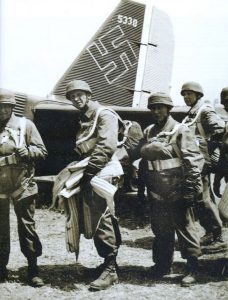 Every new for of weapon or battle plan must have a first time of use. I don’t know if the soldiers or the inventors would be more nervous as this plan unfolded, but my guess is the soldiers, who must place their lives in the hands of the inventor, and pray that he knew what he was doing. The Battle of Crete, also known as Operation Mercury was fought during World War II on May 20, 1941 to May 21, 1941. It was short-lived mostly because of the “firsts” the Allies saw during this battle.
Every new for of weapon or battle plan must have a first time of use. I don’t know if the soldiers or the inventors would be more nervous as this plan unfolded, but my guess is the soldiers, who must place their lives in the hands of the inventor, and pray that he knew what he was doing. The Battle of Crete, also known as Operation Mercury was fought during World War II on May 20, 1941 to May 21, 1941. It was short-lived mostly because of the “firsts” the Allies saw during this battle.
On that day, May 20, 1941, the Nazis began an airborne invasion of the island of Crete. Greek forced were joined by other Allied troops to defend the island. After one day of fighting, the Germans appeared to be losing, as they had suffered heavy casualties. This gave the Allies a feeling of confidence in their victory over the Nazis. Unfortunately that feeling of confidence was a little premature. The next day, the Allies encountered some communication failures, and due to the Allied tactical hesitation, as 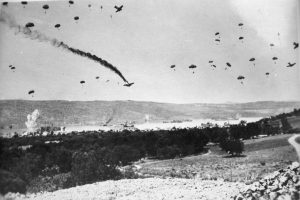 well as German offensive operations, Maleme Airfield in western Crete fell to the Germans. This enabled the Germans to land reinforcements and overwhelm the defensive positions on the north side of the island. The Allied forces had no choice but to withdrew to the south coast. More than half of them were evacuated by the British Royal Navy, but the remainder surrendered or joined the Cretan resistance. The defense of Crete evolved into a costly naval engagement, and by the end of the campaign the Royal Navy’s eastern Mediterranean strength had been reduced to only two battleships and three cruisers…not enough to defend anything.
well as German offensive operations, Maleme Airfield in western Crete fell to the Germans. This enabled the Germans to land reinforcements and overwhelm the defensive positions on the north side of the island. The Allied forces had no choice but to withdrew to the south coast. More than half of them were evacuated by the British Royal Navy, but the remainder surrendered or joined the Cretan resistance. The defense of Crete evolved into a costly naval engagement, and by the end of the campaign the Royal Navy’s eastern Mediterranean strength had been reduced to only two battleships and three cruisers…not enough to defend anything.

So…what made this an operation of firsts? The Battle of Crete was the first time that German paratroops, known as Fallschirmjäger, were used en masse. It was also the first mainly airborne invasion in military history, and the first time the Allies made significant use of intelligence from decrypted German messages from the Enigma machine. It was also the first time German troops encountered mass resistance from a civilian population. Prior to this time the Nazis held enough power over the civilians to force them to comply. These people fought back…for the first time. Due to the number of casualties and the belief that airborne forces no longer had the advantage of surprise, Adolf Hitler became reluctant to authorize further large airborne operations, preferring instead to employ paratroopers as ground troops. In contrast, the Allies were impressed by the potential of paratroopers and started to form airborne-assault and airfield-defense regiments of their own. Major changes in military history, brought about by one battle.
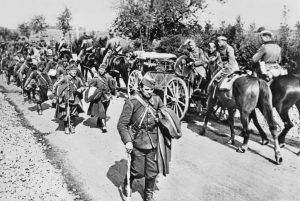 Almost immediately after he gained power in Germany, Adolf Hitler began making plans to control the world. He never was and never would be happy with just being the dictator of Germany. By May of 1940, Hitler had a plan in place to seize control. On 10 May 1940, Germany invaded Luxembourg, the Netherlands, and Belgium under the operational plan Fall Gelb, or Case Yellow. The Battle of Belgium or Belgian Campaign, often referred to within Belgium as the 18 Days’ Campaign. The Allied armies tried to halt the German Army in Belgium, thinking it to be the main German thrust. After the French had fully committed the best of the Allied armies to Belgium between 10 and 12 May, the Germans enacted the second phase of their operation. It was an unexpected move, and since the Allies were unprepared, the Germans advanced toward the English Channel. The German Army reached the Channel after five days, encircling the Allied armies. The Germans gradually reduced the pocket of Allied forces, forcing them
Almost immediately after he gained power in Germany, Adolf Hitler began making plans to control the world. He never was and never would be happy with just being the dictator of Germany. By May of 1940, Hitler had a plan in place to seize control. On 10 May 1940, Germany invaded Luxembourg, the Netherlands, and Belgium under the operational plan Fall Gelb, or Case Yellow. The Battle of Belgium or Belgian Campaign, often referred to within Belgium as the 18 Days’ Campaign. The Allied armies tried to halt the German Army in Belgium, thinking it to be the main German thrust. After the French had fully committed the best of the Allied armies to Belgium between 10 and 12 May, the Germans enacted the second phase of their operation. It was an unexpected move, and since the Allies were unprepared, the Germans advanced toward the English Channel. The German Army reached the Channel after five days, encircling the Allied armies. The Germans gradually reduced the pocket of Allied forces, forcing them 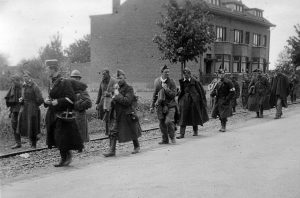 back to the sea. The Belgian Army surrendered on 28 May 1940, ending the Battle of Belgium.
back to the sea. The Belgian Army surrendered on 28 May 1940, ending the Battle of Belgium.
The first tank battle of the war occurred during the Battle of Belgium. It was called the Battle of Hannut. It was the largest tank battle in history at the time, but was later surpassed by the battles of the North African Campaign and the Eastern Front. The battle also included the Battle of Fort Eben-Emael, the first strategic airborne operation using paratroopers ever attempted. It would seem that there were a lot of firsts that happened during the 18 days of the Battle of Belgium.
Strangely, the official German historic account stated that in the 18 days of bitter fighting, the Belgian Army 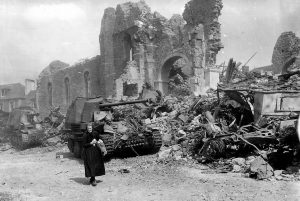 were tough opponents and spoke of the “extraordinary bravery” of its soldiers. That surprises me, because the Germans hated to appear weaker than their opponents. Nevertheless, in the end, the Belgium forces were no match for the Germans, and the Belgian collapse forced the Allied withdrawal from continental Europe. The British Royal Navy were forced to evacuate Belgian ports during Operation Dynamo, allowing the British Expeditionary Force, along with many Belgian and French soldiers, to escape capture and continue military operations. France reached its own armistice with Germany in June 1940. Belgium continued to be occupied by the Germans until the autumn of 1944, when it was finally liberated by the Western Allies.
were tough opponents and spoke of the “extraordinary bravery” of its soldiers. That surprises me, because the Germans hated to appear weaker than their opponents. Nevertheless, in the end, the Belgium forces were no match for the Germans, and the Belgian collapse forced the Allied withdrawal from continental Europe. The British Royal Navy were forced to evacuate Belgian ports during Operation Dynamo, allowing the British Expeditionary Force, along with many Belgian and French soldiers, to escape capture and continue military operations. France reached its own armistice with Germany in June 1940. Belgium continued to be occupied by the Germans until the autumn of 1944, when it was finally liberated by the Western Allies.
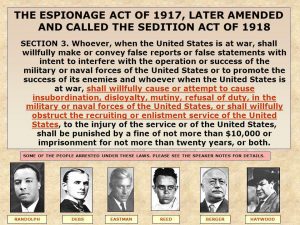 It seems strange to me to create a piece of legislation that protects the government and the war effort from…basically hate speech, but on May 16, 1918, the United States Congress did pass just such an act. What seems even more strange is to have a need for such a piece of legislation during a time of war. Called the Sedition Act, a piece of legislation designed to protect America’s participation in World War I. Along with the Espionage Act of the previous year, the Sedition Act was orchestrated largely by A. Mitchell Palmer, the United States attorney general under President Woodrow Wilson. I think most of us understand espionage, and why such an act was important to the war effort. The Espionage Act, passed shortly after the US entrance into the war in early April 1917, made it a crime for any person to convey information intended to interfere with the U.S. armed forces’ prosecution of the war effort or to promote the success of the country’s enemies.
It seems strange to me to create a piece of legislation that protects the government and the war effort from…basically hate speech, but on May 16, 1918, the United States Congress did pass just such an act. What seems even more strange is to have a need for such a piece of legislation during a time of war. Called the Sedition Act, a piece of legislation designed to protect America’s participation in World War I. Along with the Espionage Act of the previous year, the Sedition Act was orchestrated largely by A. Mitchell Palmer, the United States attorney general under President Woodrow Wilson. I think most of us understand espionage, and why such an act was important to the war effort. The Espionage Act, passed shortly after the US entrance into the war in early April 1917, made it a crime for any person to convey information intended to interfere with the U.S. armed forces’ prosecution of the war effort or to promote the success of the country’s enemies.
The Sedition Act was aimed at socialists, pacifists and other anti-war activists. The Act imposed harsh penalties on anyone who was found guilty of making false statements that interfered with the prosecution of the war; insulting or abusing the United States government, the flag, the Constitution or the military; agitating against the production of necessary war materials; or advocating, teaching or defending any of these acts. Hmmm…I think we have need of this act in today’s America. Those who were found guilty of such actions, would according to the Sedition Act be punished by a fine of not more than $10,000 or imprisonment for not more than twenty years, or both. The penalty was the same as the one for acts of espionage in the earlier legislation.
Though Wilson and Congress considered the Sedition Act as crucial in order to stifle the spread of dissent within the country in that time of war, modern legal scholars felt the act was contrary to the letter and spirit of the US Constitution, specifically to the First Amendment of the Bill of Rights. One of the most famous prosecutions under the Sedition Act during World War I was that of Eugene V. Debs, a pacifist labor organizer and founder of the International Workers of the World (IWW Debs had run for president in 1900 as a Social Democrat and in 1904, 1908 and 1912 on the Socialist Party of America ticket. He delivered an anti-war speech in June 1918 in Canton, Ohio and was promptly arrested. After being found guilty, he was sentenced to ten years in prison under the Sedition Act. Debs appealed the decision and upon stating that Debs had acted with the intention of obstructing the war effort the US Supreme Court upheld his conviction.
Chief Justice Oliver Wendell Holmes referred to the earlier landmark case of Schenck v. United States (1919) as the basis for his decision. Charles Schenck, also a Socialist, had been found guilty under the Espionage Act after distributing a flyer urging recently drafted men to oppose the United States conscription policy. Holmes stated that freedom of speech and press could be constrained in certain instances. He said that the question in every case is “whether the words used are used in such circumstances and are of such a nature as to create a clear and present danger that they will bring about the substantive evils that Congress has a right to prevent.”
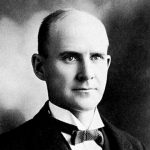
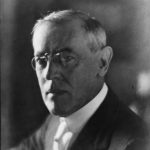
Debs’ sentence was commuted in 1921 when the Sedition Act was repealed by Congress. Major portions of the Espionage Act remain part of United States law to the present day, although the crime of sedition was largely eliminated by the famous libel case Sullivan v. New York Times (1964), which determined that “the press’s criticism of public officials—unless a plaintiff could prove that the statements were made maliciously or with reckless disregard for the truth—was protected speech under the First Amendment.”
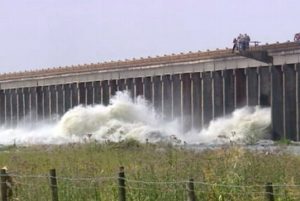
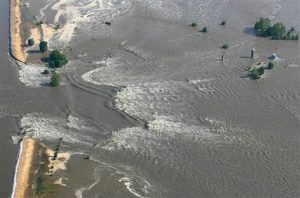 As a kid, I remember that whenever we were sitting at an intersection that was very busy, causing us to have to wait seemingly forever to be able to get across the intersection, one of my parents would say something like, “Wow!! Who opened the floodgates?” Of course, I didn’t know what a floodgate was then, and I just thought they were referring to a flood of vehicles, which they were, and they probably didn’t think about what a real floodgate was either. It was just a funny saying to us, but in reality, a floodgate is a very important flood preventative tool. I guess that our version of floodgates meant the same thing, except in vehicles and not in water.
As a kid, I remember that whenever we were sitting at an intersection that was very busy, causing us to have to wait seemingly forever to be able to get across the intersection, one of my parents would say something like, “Wow!! Who opened the floodgates?” Of course, I didn’t know what a floodgate was then, and I just thought they were referring to a flood of vehicles, which they were, and they probably didn’t think about what a real floodgate was either. It was just a funny saying to us, but in reality, a floodgate is a very important flood preventative tool. I guess that our version of floodgates meant the same thing, except in vehicles and not in water.
On May 15, 2011, the United States Army Corps of Engineers opened the floodgates in the state of Louisiana along the Mississippi river. This was an effort to save larger cities located along the Mississippi, like Baton Rouge and New Orleans, from flooding. The Mississippi was already heading for critical stages, and it was only expected to get worse. The flooding was expected to cover up to three thousand square miles, and it had the potential to affect up to 25,000 people. This was the first time in forty years that the river levels have forced the opening of the floodgates. I don’t know how often floodgates are utilized in other areas to prevent flooding, but when people live in flood prone areas, they have to use whatever mean necessary to protect themselves and their property from damage and death.
The Mississippi River floods in April and May 2011 were among the largest and most damaging recorded along that river in the past century. The flood was comparable in extent to the major floods of 1927 and 1993. From April 14–16, the storm system that was responsible for one of the largest tornado outbreaks in US history also produced large amounts of rainfall across the southern and midwestern United States. Then two more storm systems, each with heavy rain and tornadoes, hit in the third week of April. In the fourth week of April, from April 25–28, another and even more extensive and deadly storm system passed through the Mississippi Valley dumping more rainfall resulting in deadly flash floods. The unprecedented extensive rainfall from these four storms, combined with springtime snow melt from the Upper Midwest, created the perfect conditions for a 500-year flood along the Mississippi.
The purpose of opening the floodgates was to take some of the pressure off of the levees, in the hope of preventing the breech of the levees. Most of the time, it works pretty well, like when the city of Casper, Wyoming, where I live opens up the gates at the area lakes and while the river runs high for a time, there are 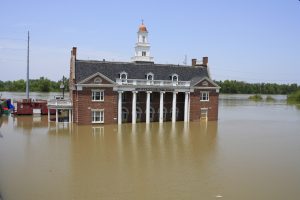
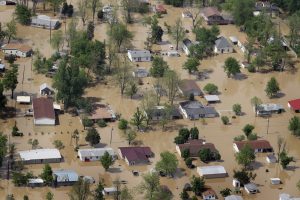 very few places where it spills over the bank. Unfortunately, the Mississippi river still spilled over its banks, and broke levees. I don’t think anyone could have really prevented the monster floods that hit the area in 2011, or even in 1927 or 1933, but they couldn’t focus on that right then, because they had to do whatever they could to prevent. In the end, the flood came and the damage was done.
very few places where it spills over the bank. Unfortunately, the Mississippi river still spilled over its banks, and broke levees. I don’t think anyone could have really prevented the monster floods that hit the area in 2011, or even in 1927 or 1933, but they couldn’t focus on that right then, because they had to do whatever they could to prevent. In the end, the flood came and the damage was done.
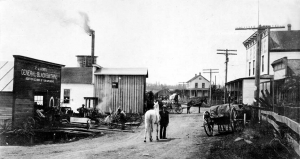
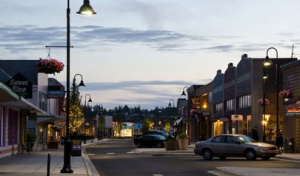 I first heard about Oak Harbor, Washington when my sister, Caryl Reed and her then husband lived there while he was stationed at the nearby naval station at Whidbey Island. Now that my daughter, Amy Royce, her husband Travis and their kids Shai and Caalab live in the Bellingham area of upstate Washington, Oak Harbor has once again come into range of my radar. Oak Harbor was founded in the 1850s when three settlers staked claims where the city now stands. Martin Taftezon, a shoemaker from Norway; C.W. Sumner from New England; and Ulrich Freund, a Swiss Army officer. Freund retained part of his claim, which today is home to his descendants. The city was incorporated on May 14, 1915, and celebrated it’s 100th anniversary in 2015.
I first heard about Oak Harbor, Washington when my sister, Caryl Reed and her then husband lived there while he was stationed at the nearby naval station at Whidbey Island. Now that my daughter, Amy Royce, her husband Travis and their kids Shai and Caalab live in the Bellingham area of upstate Washington, Oak Harbor has once again come into range of my radar. Oak Harbor was founded in the 1850s when three settlers staked claims where the city now stands. Martin Taftezon, a shoemaker from Norway; C.W. Sumner from New England; and Ulrich Freund, a Swiss Army officer. Freund retained part of his claim, which today is home to his descendants. The city was incorporated on May 14, 1915, and celebrated it’s 100th anniversary in 2015.
When we visited Caryl, she took us to see one of the prettiest places in the area, known as Deception Pass. You might wonder why it is called Deception Pass. The Pass is actually a strait between the Whidbey and the Fidalgo Islands and is called “Deception” because George Vancouver was mislead by it into thinking that Whidbey Island was a peninsula. However it came to be, Deception Pass, the area is beautiful. There is also a series of 25 trails in the Deception State Park that I am interested in. I am hoping to be able to hike the area on our next visit to see our daughter and her family.
The town of Oak Harbor is Whidbey Island’s largest incorporated city. It is located in Island County. Oak Harbor was named for the Garry Oak trees which grace its skyline. The growth of Oak Harbor was really brought on by 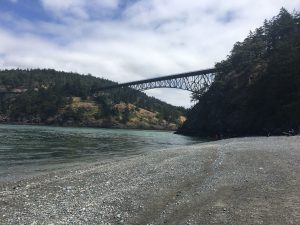
 two events…the building of Deception Pass Bridge on July 31, 1935, and the completion of Naval Air Station Whidbey Island on September 21, 1942. After that, Oak Harbor grew from a population of 362 in 1935, to 22,954 in 2018. I enjoyed our visit when my sister lived there, and even though our daughter lives further north, Oak Harbor is not too far away for a visit and maybe a hike.
two events…the building of Deception Pass Bridge on July 31, 1935, and the completion of Naval Air Station Whidbey Island on September 21, 1942. After that, Oak Harbor grew from a population of 362 in 1935, to 22,954 in 2018. I enjoyed our visit when my sister lived there, and even though our daughter lives further north, Oak Harbor is not too far away for a visit and maybe a hike.

